中国组织工程研究 ›› 2016, Vol. 20 ›› Issue (40): 6048-6053.doi: 10.3969/j.issn.2095-4344.2016.40.018
• 内分泌系统损伤与修复动物模型 Animal models of endocrine system injury and repair • 上一篇 下一篇
实验性猕猴2型糖尿病模型的建立及评价
宋巧巧1,周慧良2,镇海涛1,王 娜1,邓 晶1,王金祥3,潘兴华3
- 1湖北科技学院内科教研室,湖北省咸宁市 437100;2咸宁市中心医院,湖北省咸宁市 437100;3解放军昆明总医院干细胞与组织器官工程研究中心,云南省干细胞工程实验室,云南省昆明市 650032
Establishment and evaluation of a rhesus monkey model of experimental type 2 diabetes mellitus
Song Qiao-qiao1, Zhou Hui-liang2, Zhen Hai-tao1, Wang Na1, Deng Jing1, Wang Jin-xiang3, Pan Xing-hua3
- 1Department of Internal Medicine, Hubei University of Science and Technology, Xianning 437100, Hubei Province, China; 2Xianning Central Hospital, Xianning 437100, Hubei Province, China; 3Stem Cell Engineering Laboratory of Yunnan Province, Stem Cells and Organ Tissue Engineering Research Center, Kunming General Hospital of Chengdu Military Command, Kunming 650032, Yunnan Province, China
摘要:
文章快速阅读:
.jpg)
文题释义:
2型糖尿病动物模型:关于2型糖尿病动物模型的研究,国内外均主要集中于兔、大鼠、小鼠,其方法涉及自发性动物模型、转基因、高脂饲料诱导和化学诱导等,这些动物模型对2型糖尿病的基础研究和防治具有重要意义,但这些非灵长类种属的动物模型与人类糖尿病的发病改变存在一定差异。非人灵长类动物和人类更为接近,其模型能更好地模拟人类糖尿病病理生理及发病过程,可靠性更高。目前国内外关于2型糖尿病非人灵长类动物模型的研究报道很少,尚缺乏标准化制作方法和评价标准。
链脲佐菌素诱导糖尿病模型:链脲佐菌素可选择性破坏一定种属动物的胰岛β细胞,能诱发许多动物产生糖尿病,采用一次大剂量静脉注射链脲佐菌素,可导致大部分胰岛β细胞出现损伤,出现稳定的高血糖,但这种高血糖状态更为接近于人类的1型糖尿病,与2型糖尿病的胰岛素抵抗具有一定的差距,而小剂量链脲佐菌素对机体的损伤较小,可提高其药物的生物安全性,减少对动物的不良反应,同时还可缩短单纯高热量饮食诱导糖尿病的造模周期。
摘要
背景:目前国内外关于2型糖尿病的非人灵长类动物模型研究报道很少,缺乏标准化制作方法和评价标准。
目的:建立一种安全、有效的猕猴2型糖尿病模型及评价方法。
方法:将12只猕猴随机分为实验组(n=9)与对照组(n=3),实验组高糖高脂饮食喂养4周后,一次性腹腔注射30 mg/kg链脲佐菌素,建立2型糖尿病模型;对照组注射等量生理盐水。注射第12周,采集外周血血清,测定空腹血糖、血脂、胰岛素、C-肽水平,通过静脉葡萄糖耐量试验、C-肽释放试验检测胰腺胰岛功能,取胰腺、肾脏、肝脏组织行病理组织学检查。
结果与结论:①注射第12周时,实验组空腹血糖、三酰甘油、总胆固醇均显著高于对照组(P < 0.05),C-肽及胰岛素显著低于对照组(P < 0.05);②实验组静脉葡萄糖耐量试验曲线下面积较对照组增大(P < 0.05),C-肽释放试验曲线下面积明显减小(P < 0.05);③实验组胰腺、肝脏、肾脏组织切片显示均发生了典型糖尿病病理改变;④因此认为高糖高脂饮食联合小剂量链脲佐菌素诱导猕猴2型糖尿病模型成功,是一种简单安全、有效的方法。
ORCID: 0000-0003-2669-2546(宋巧巧)
中图分类号:
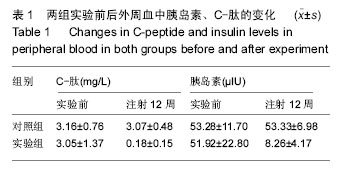
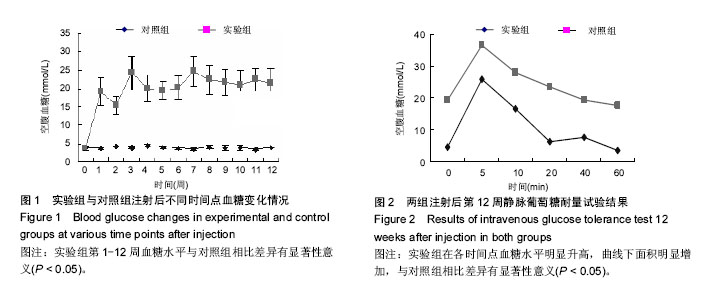
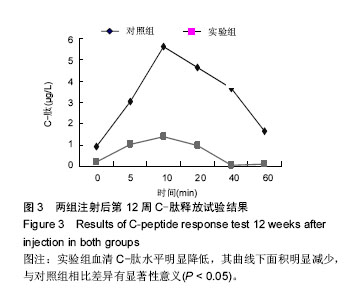
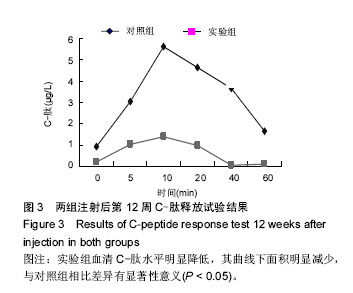
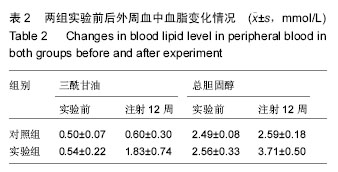
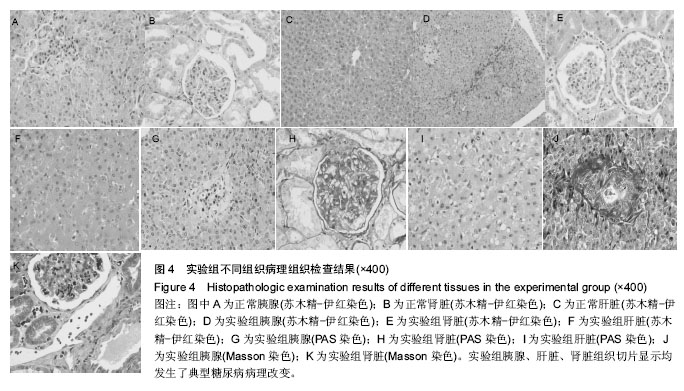
.jpg)